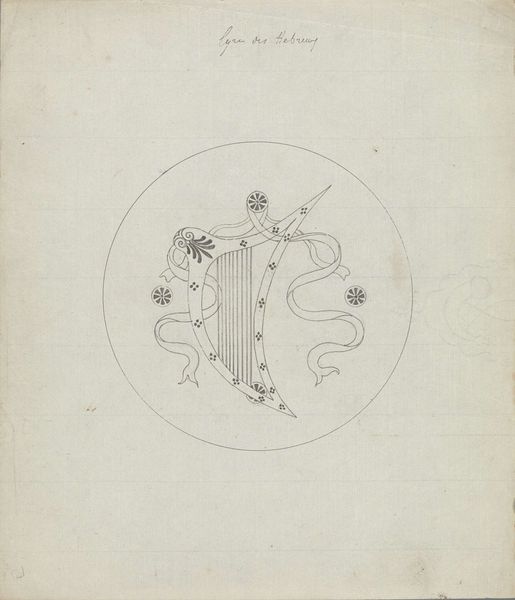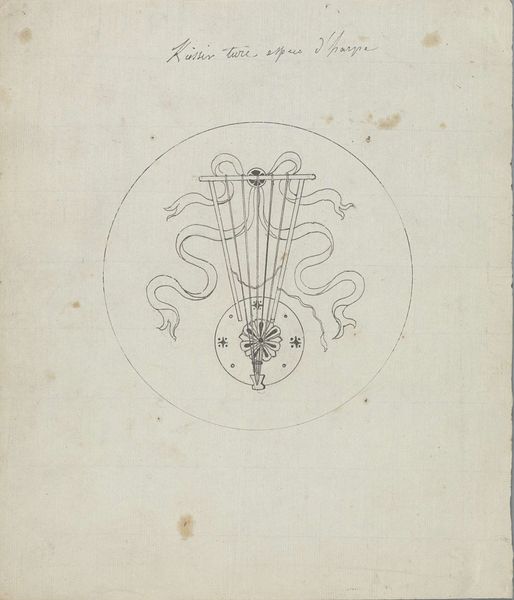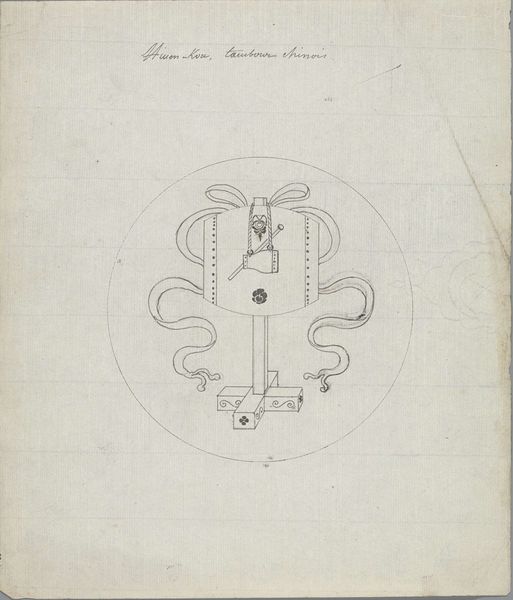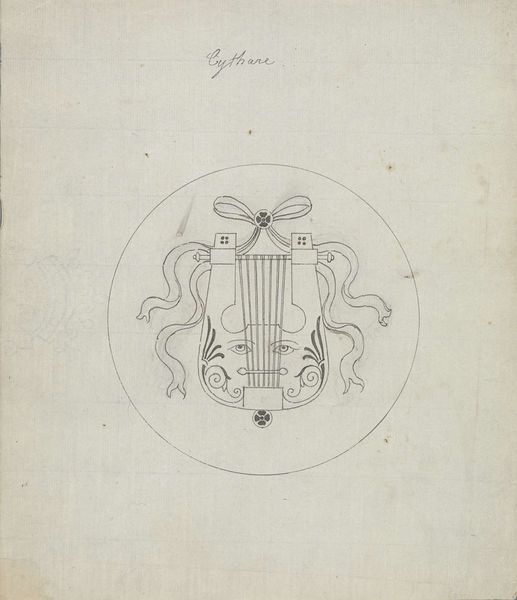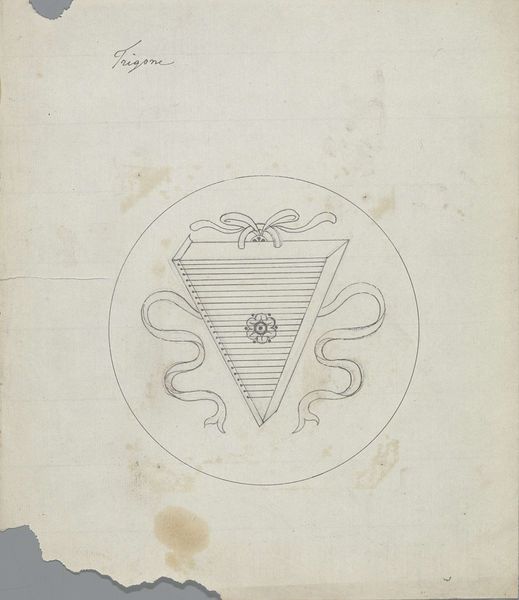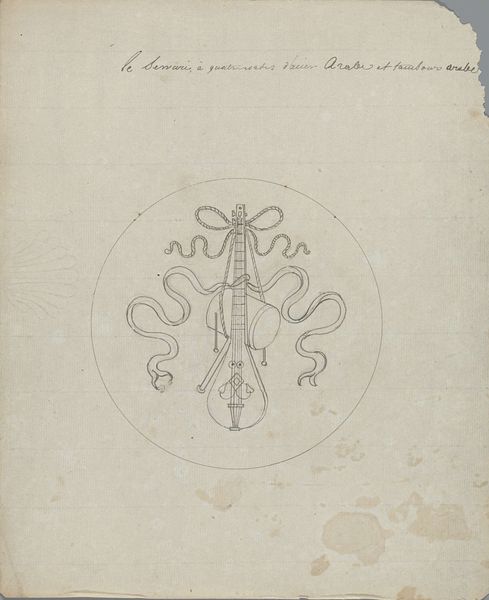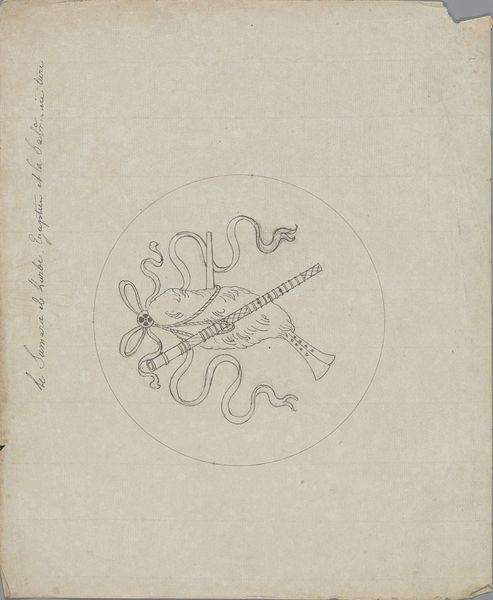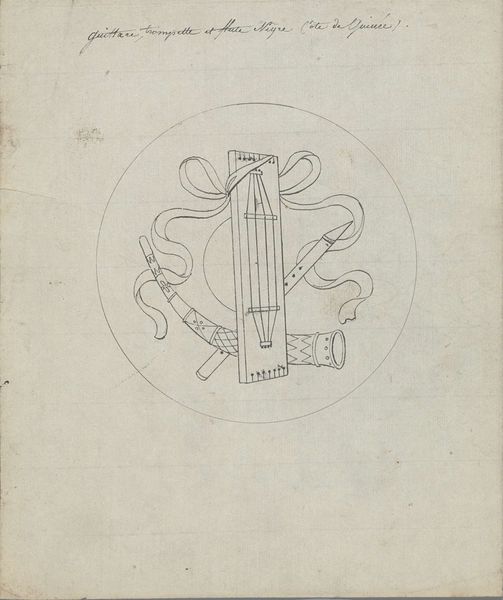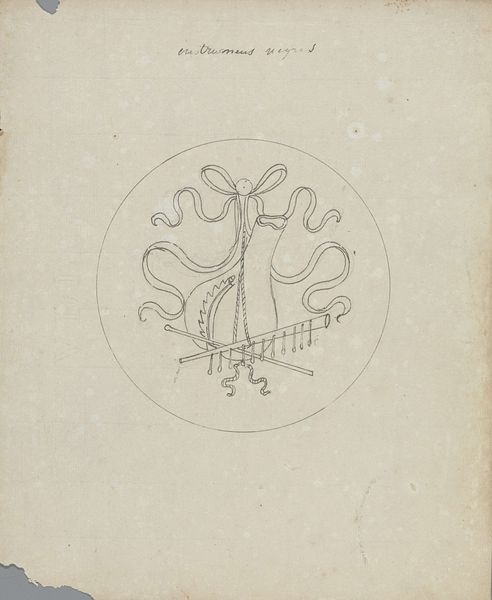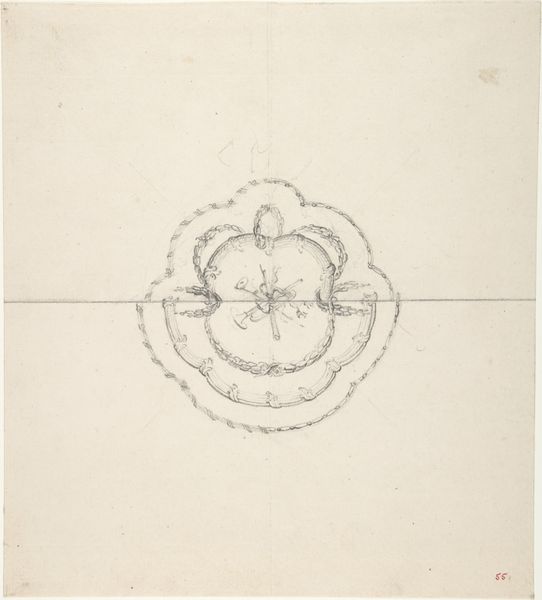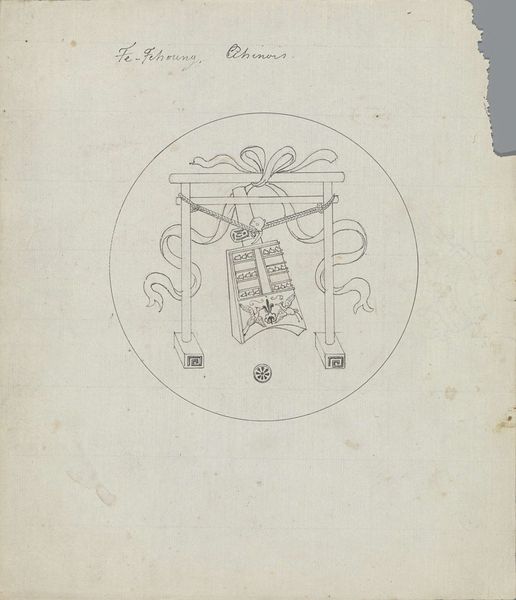
drawing, paper, pencil
#
drawing
#
paper
#
form
#
geometric
#
pencil
#
line
#
academic-art
Dimensions: height 253 mm, width 208 mm, diameter 123 mm
Copyright: Rijks Museum: Open Domain
Curator: This pencil drawing, titled "Tabbel grand tambour turc," was created by Pierre Félix van Doren before 1828. It features a Turkish drum surrounded by decorative elements. What strikes you first about this work? Editor: The drawing's precision, but also its incompleteness. You see the instrument rendered with an academic dryness in pencil, yet it’s merely a plan for something meant to be made. One imagines this as the first stage for building an object that resonates beyond paper. Curator: Precisely. Notice the geometric lines that define the drum’s form, stark and unadorned. It reminds us that art need not only be concerned with aesthetic representation but can focus on fundamental structures and abstract concepts of shape. Editor: I’m more fascinated by the implied labor. Each line signifies time and skill—envisioning the stretching of the drum's skin, the crafting of the shell. Even those decorative ribbons involve labor. The process is just barely captured here. I am curious if Van Doren made the instrument himself. Curator: Van Doren had some official artistic appointments to the Royal Court of Netherlands so there's likely an element of design or symbolic representation beyond simply its creation. The perfect circle gives form, which lends a sense of idealized musical instrument, perhaps symbolizing the exoticism of Turkish culture in the Netherlands at the time. Editor: I understand that this symbolizes courtly symbolism, yet I cannot ignore the real social context from where it originated: the materials to construct that "grand tambour turc". Was this meant for celebration or subjugation? This makes us ponder on colonial appropriation and musical imperialism. Curator: Perhaps we can say that Van Doren’s drawing, on the one hand, embodies formal purity—structure, line, and shape, on the other hand reveals the raw social power behind its form. Both in tension here, and within art history as a whole. Editor: Well said, perhaps by engaging with it from each perspective, the artistic process and form merge. The labor and idea can co-exist and further conversation.
Comments
No comments
Be the first to comment and join the conversation on the ultimate creative platform.

